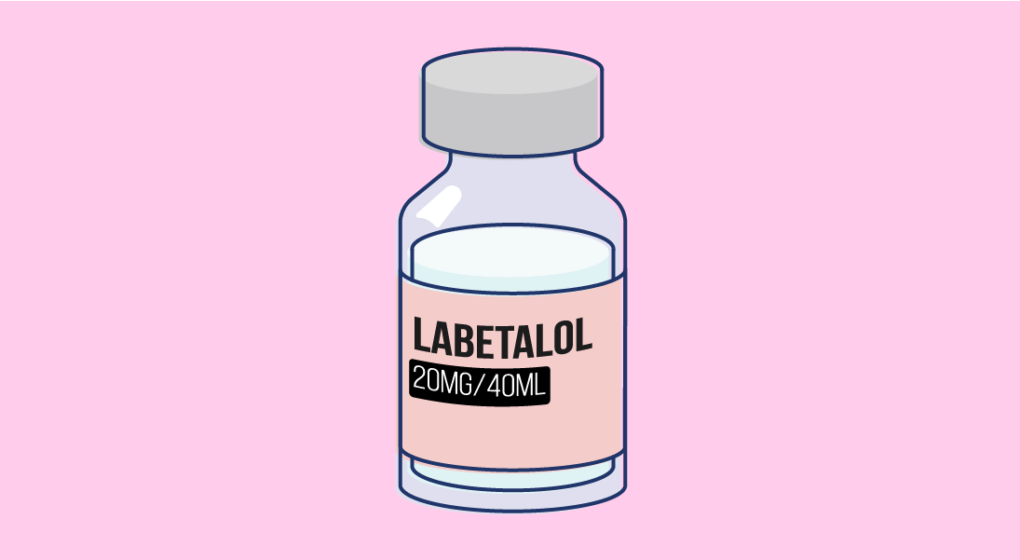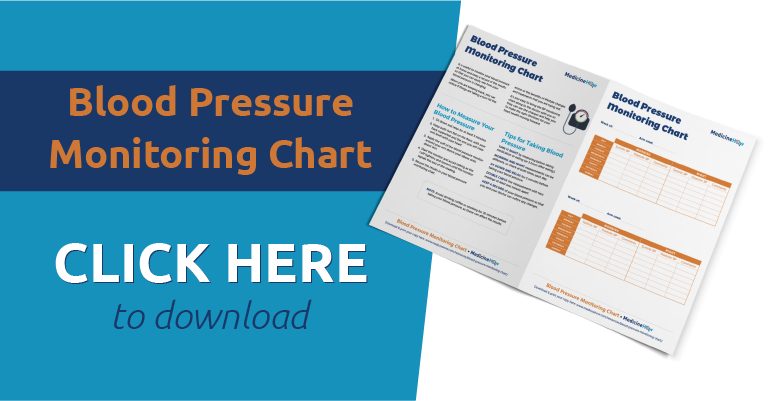
Labetalol is a type of drug called a beta blocker that works by blocking beta receptors in your heart and around your body. This causes the heart muscles to contract less often and less forcefully, leading to a lower heart rate and volume of blood pumped around your body, which is useful to lower blood pressure and treat hypertension.
Brand Names and Doses
![]() Labetalol is the generic name of the drug, which is the name of the active ingredient that works the effect of the medication. There are two different brand names of medications that contain labetalol: Presolol and Trandate. Both of these contain labetalol and do the same thing, but are called different names because they are manufactured by different companies.
Labetalol is the generic name of the drug, which is the name of the active ingredient that works the effect of the medication. There are two different brand names of medications that contain labetalol: Presolol and Trandate. Both of these contain labetalol and do the same thing, but are called different names because they are manufactured by different companies.
There are two different brand names of medications that contain labetalol: Presolol and Trandate. Both of these contain labetalol and do the same thing, but are called different names because they are manufactured by different companies.
Both brands are available in two different doses: 100 mg and 200 mg. It is usually best to begin with the lower 100 mg dose and increase the dose after a week or so when your body has adjusted to taking the drug to help reduce the risk of side effects.

What type of drug is it?
Labetalol is a type of drug called a beta blocker, which is a group of medications that all work in a similar way. Other beta blocker drugs include:
Even though they are all in the same class, there are a few subtle differences between them.
What makes labetalol stand out?
 Labetalol is a broad-acting beta blocked, which means that it works to block beta blocker all around the body – in the heart, in the lungs, in your blood vessels. This means it has a more general effect and can also lead to more side effects as other receptors in the body are blocked (even the ones we weren’t intending to block).
Labetalol is a broad-acting beta blocked, which means that it works to block beta blocker all around the body – in the heart, in the lungs, in your blood vessels. This means it has a more general effect and can also lead to more side effects as other receptors in the body are blocked (even the ones we weren’t intending to block).
Labetalol is also excreted from the body by being chemically changed into other substances in your liver. If your liver does function 100% as it should, labetalol may not be the best choice or you may need a lower dose than usual.
How does labetalol work?
![]() Beta-adrenergic receptors are found in the heart, lungs and a few other places around the body to detect a message and tell the muscles in the area it contract together. In the heart, this means that the heart muscles contract together, leading to a heart beat that pushes the blood out and into your blood vessels.
Beta-adrenergic receptors are found in the heart, lungs and a few other places around the body to detect a message and tell the muscles in the area it contract together. In the heart, this means that the heart muscles contract together, leading to a heart beat that pushes the blood out and into your blood vessels.
Labetalol stops this process from happening normally. It attached to the beta receptors all throughout the body, making it harder for the normal molecules to bind to the receptor. As a result, the message isn’t received as usual.
This doesn’t stop the heart from functioning altogether, but it does slow the heart down. The muscles contract less often leading to a slower heart rate and less forcefully leading to lower blood pressure.
Labetalol also works its effect on the muscles in the lungs and around the blood vessels because it has a broad effect. This can be a positive thing if we want to effect these areas, or it can lead to side effects if it happens as a sort of afterthought.
What is it used for?
Labetalol is usually used to lower blood pressure and manage hypertension. This is because it helps to slow the rate down and reduce the force of the blood, both of which help to reduce the pressure of the blood.
Labetalol Side Effects
![]() The most common side effects of labetalol are due to the way we want the drugs to work in the body, when it works too well. Some signs of this are:
The most common side effects of labetalol are due to the way we want the drugs to work in the body, when it works too well. Some signs of this are:
- Low heart rate (bradycardia)
- Headache
- Tiredness
- Dizziness
- Flushing
If this happens to you, it is best to talk to your doctor. Usually, lowering the dose can help to resolve these signs and get your blood pressure back into the normal range. Most people start with a low dose and gradually increase the dose to stop this from happening.
Sometimes you may also feel nauseous, have diarrhoea or a cold sensation in your extremities like your hands and feet when you take labetalol. For a complete list of the side effects, you should see the medicine information leaflet.
![]() Labetalol is supposed to be taken long-term to help manage blood pressure. If you suddenly stop taking it, you can get rebound hypertension, which means that the muscles in the heart will suddenly be able to contract with full force again and the pressure shoots up. Instead, it’s best to slowly reduce the dose and eventually stop taking it to give your body time to adjust to working without the medication.
Labetalol is supposed to be taken long-term to help manage blood pressure. If you suddenly stop taking it, you can get rebound hypertension, which means that the muscles in the heart will suddenly be able to contract with full force again and the pressure shoots up. Instead, it’s best to slowly reduce the dose and eventually stop taking it to give your body time to adjust to working without the medication.
If you have a low heart rate of less than 45-50 beats/minute, labetalol is not likely to be the best choice for you. Bisoprolol can cause the heart rate to go even slower because of the way it works, which can be dangerous.
If you have diabetes, labetalol can hide the signs of side effects life hypoglycemia that can occur with some diabetic medications. Hypoglycemia occurs when you have a low concentration of sugar in your blood, which is usually marked by signs of fast heart rate and tremor. Labetalol can hide these effects, meaning that you may notice until the damage is already done.

Pregnancy and Breastfeeding
![]() Labetalol is not recommended to be used in pregnancy because it may cause low heart rate (bradycardia) in your baby.
Labetalol is not recommended to be used in pregnancy because it may cause low heart rate (bradycardia) in your baby.
If you are breastfeeding, labetalol can be taken in some cases. There is a small chance that some of the drug may be excreted in the breastmilk, but it has been safely used by women who are breastfeeding. If your doctor has recommended that you use it, simply be aware of any signs that it might be affecting your baby, such as low heart rate, tiredness and irritability.
Pin it!


